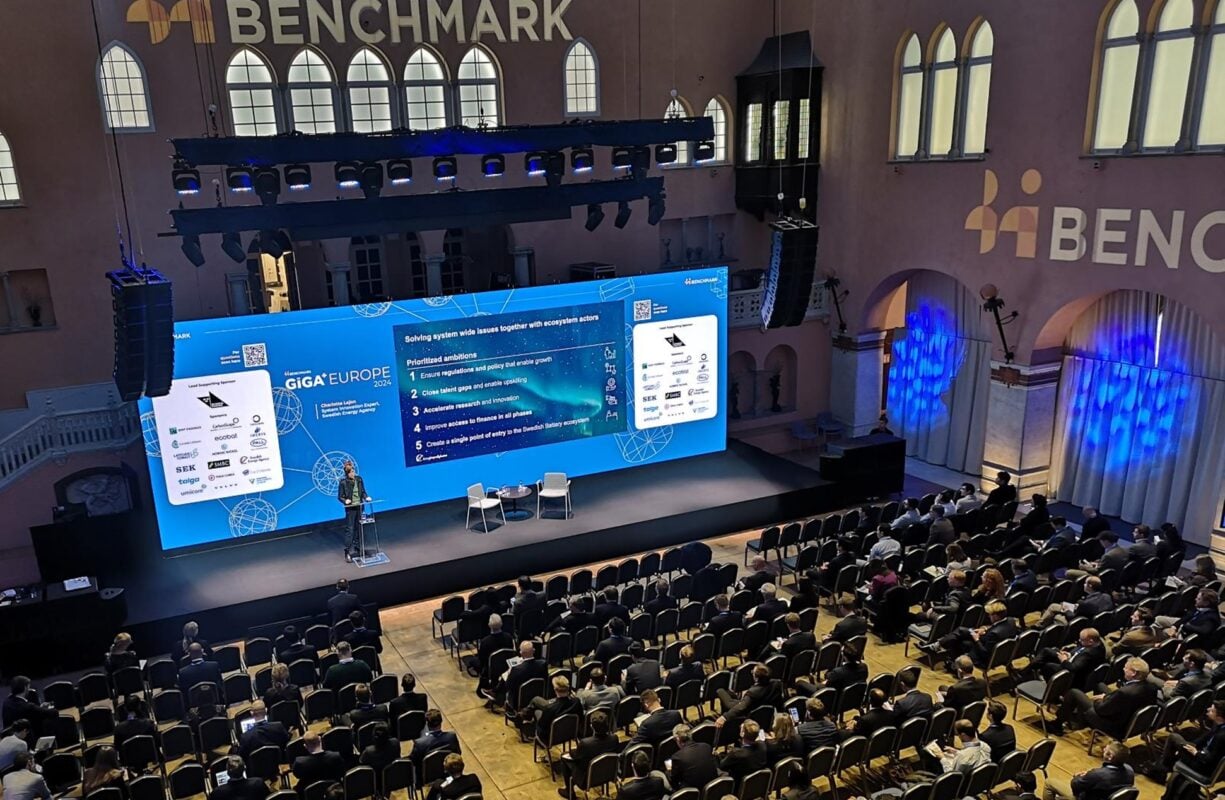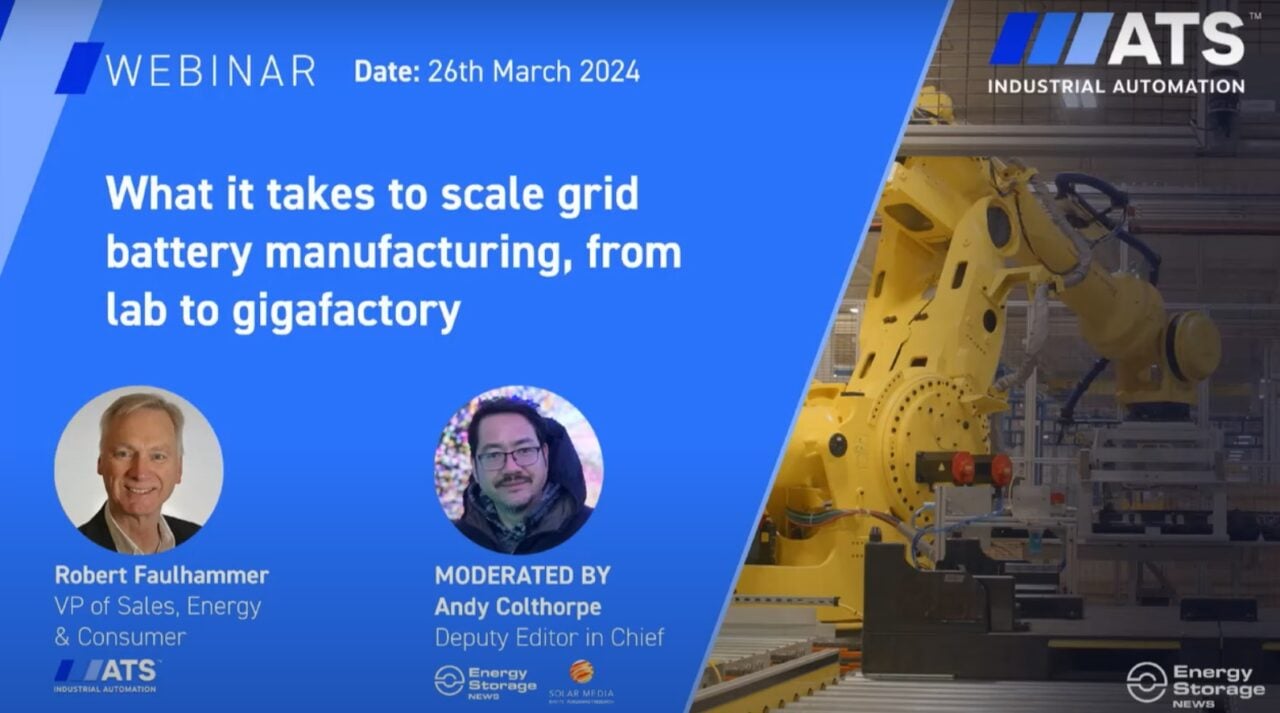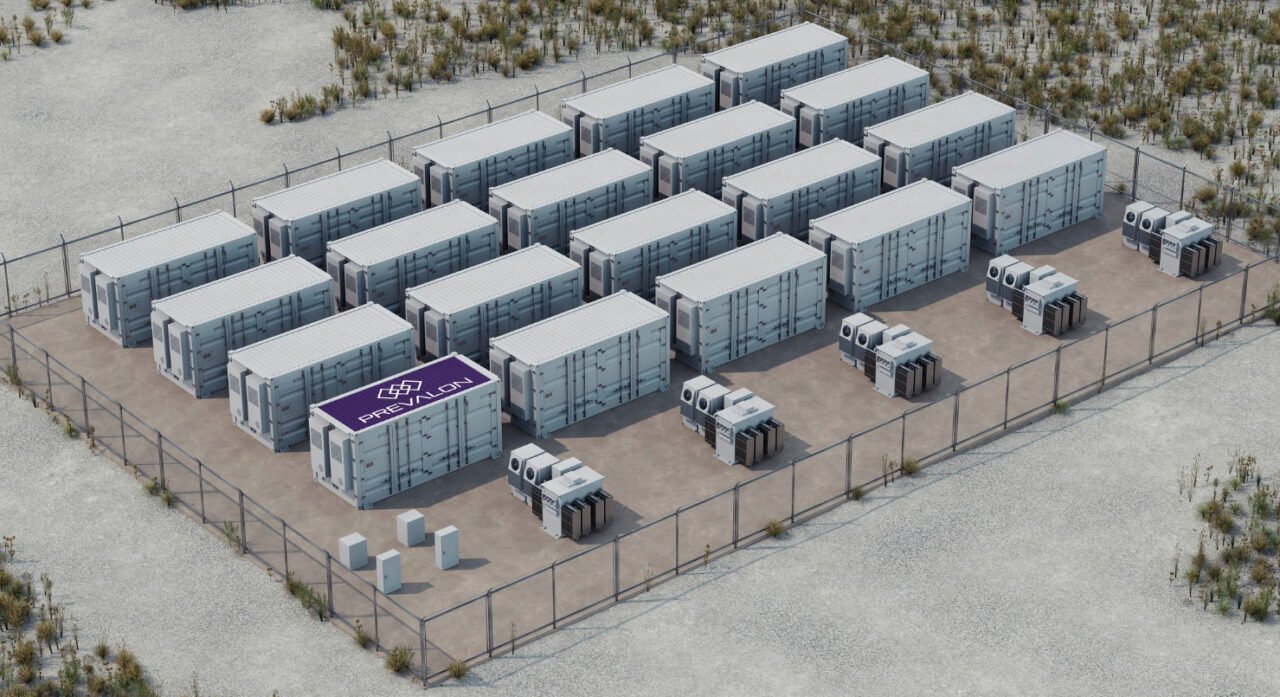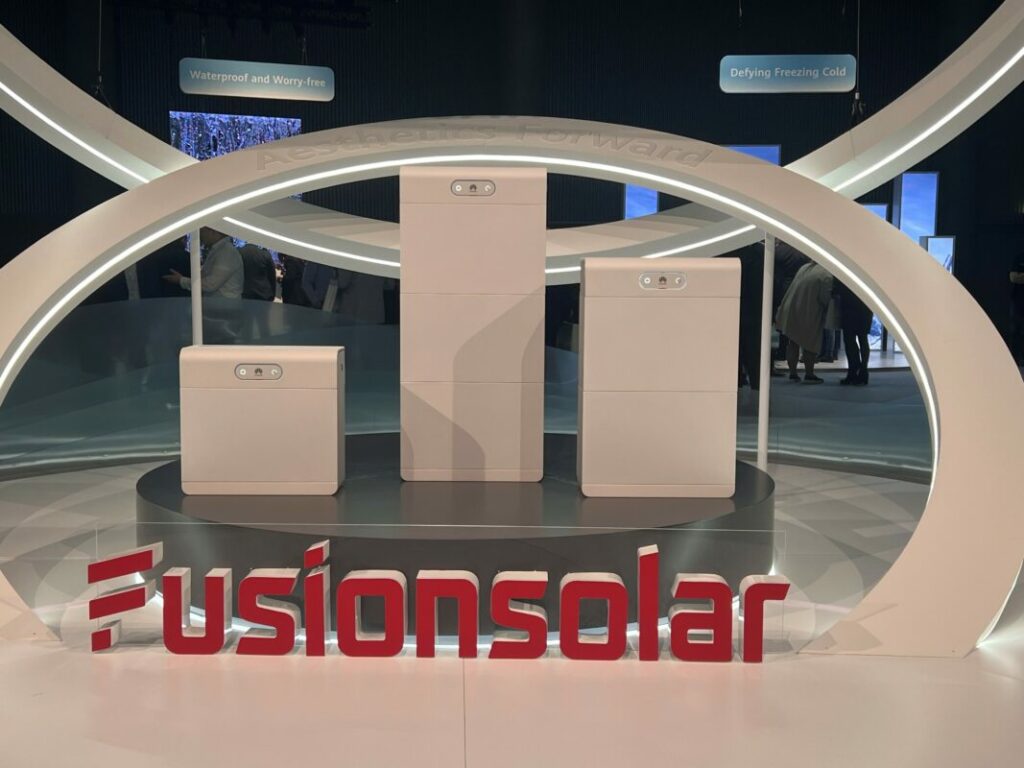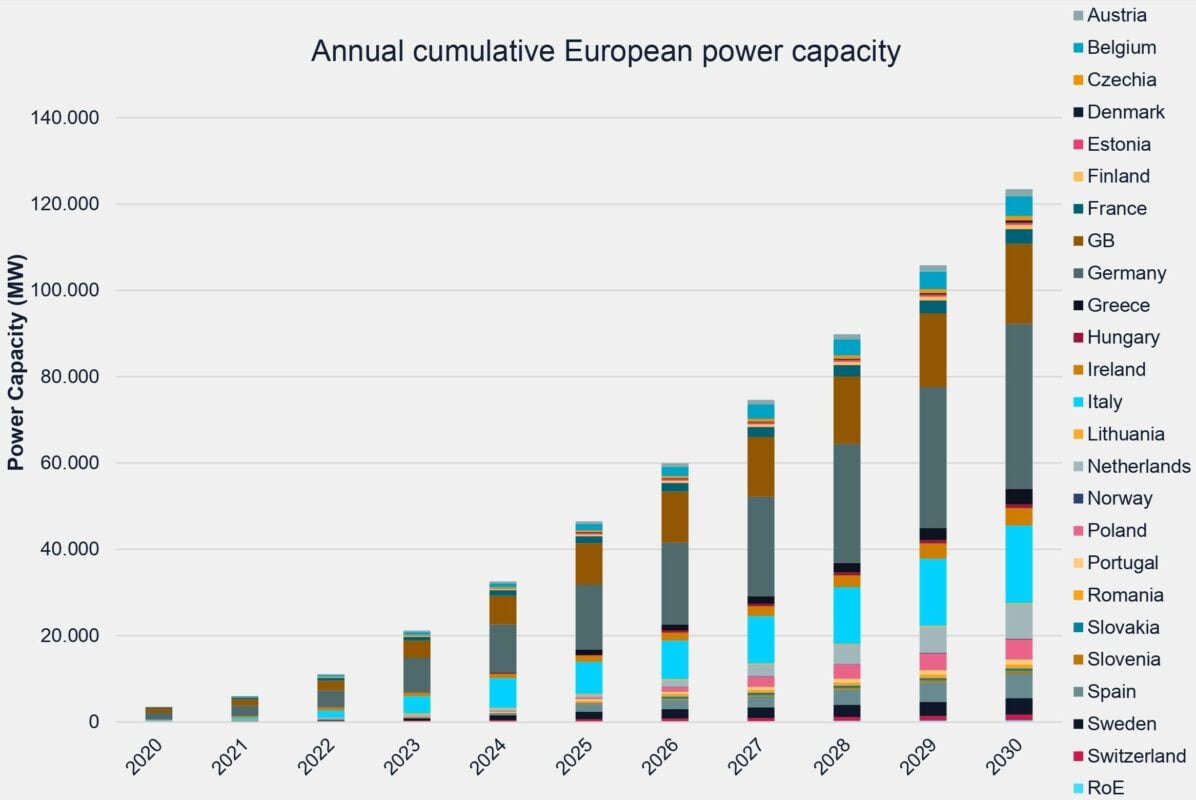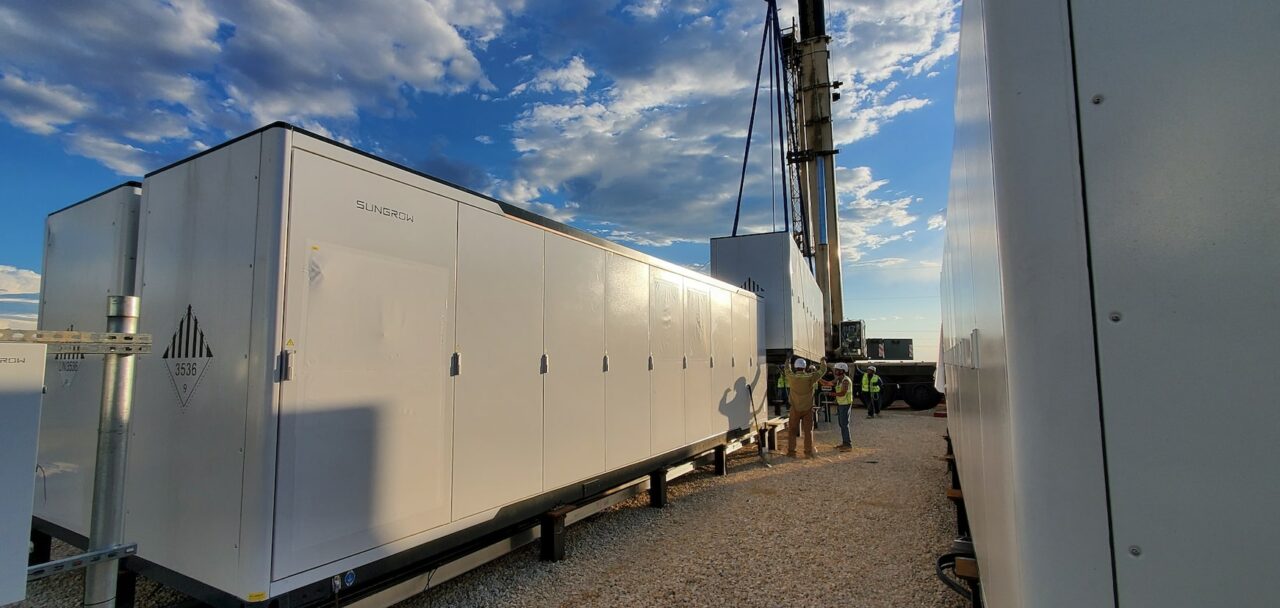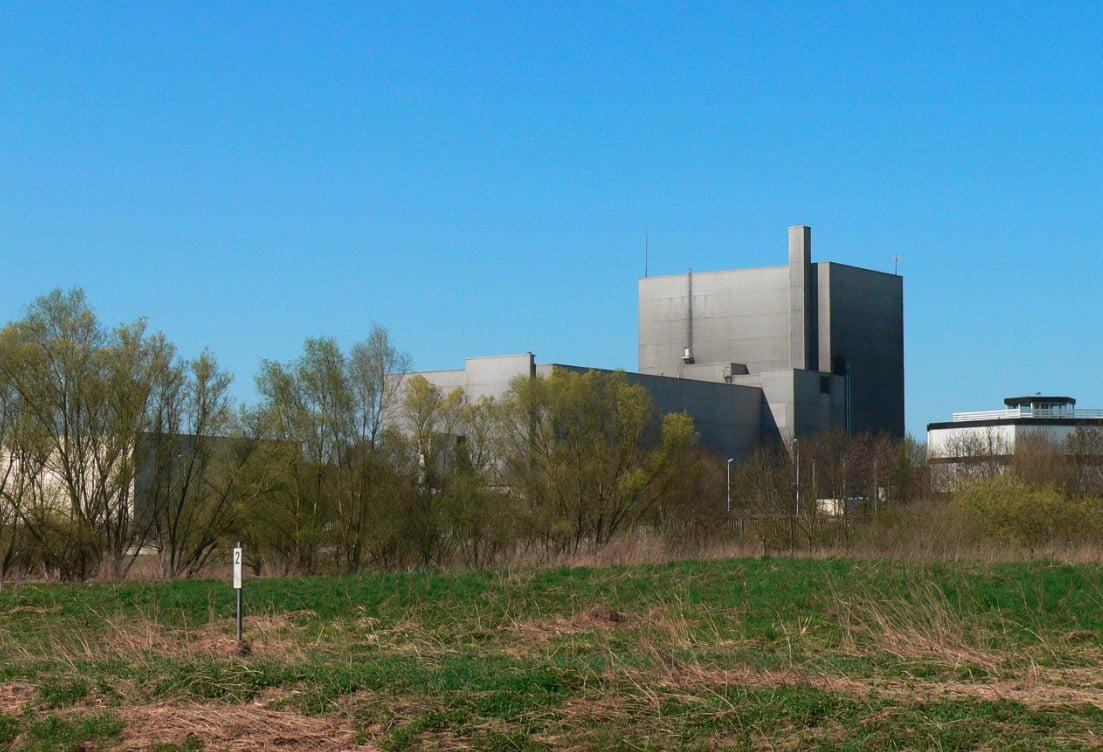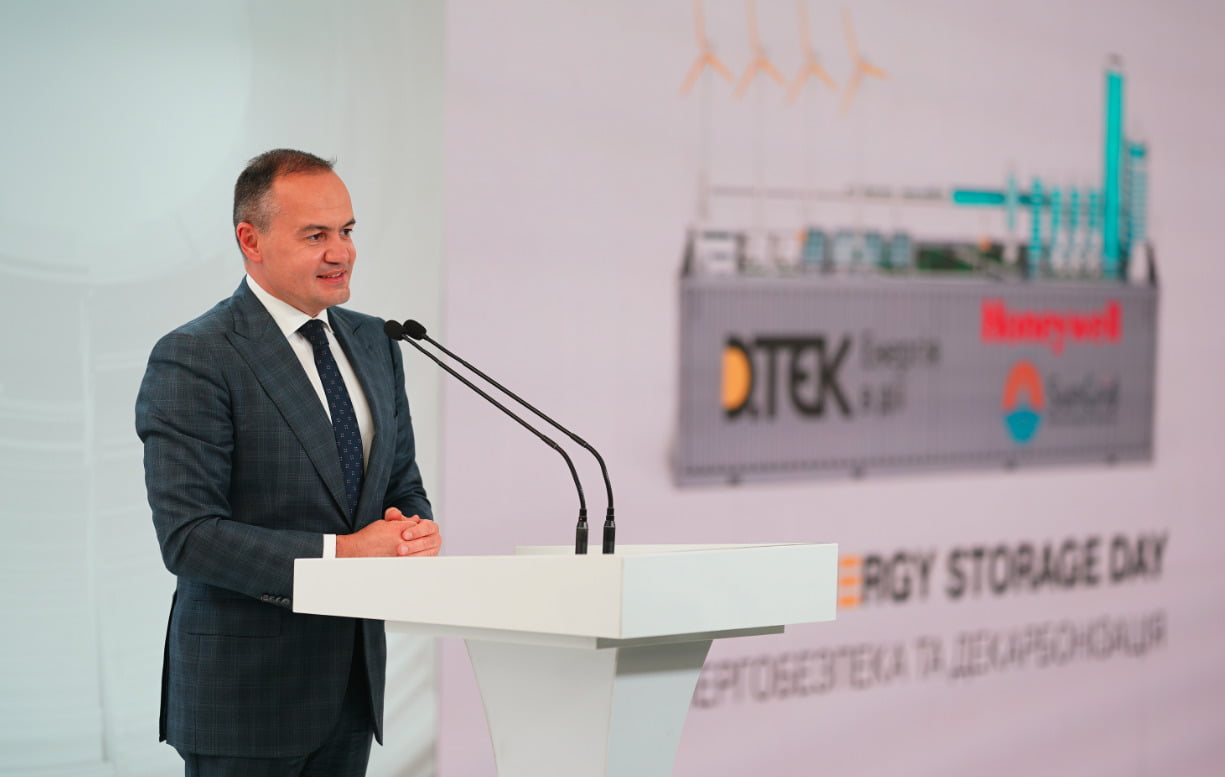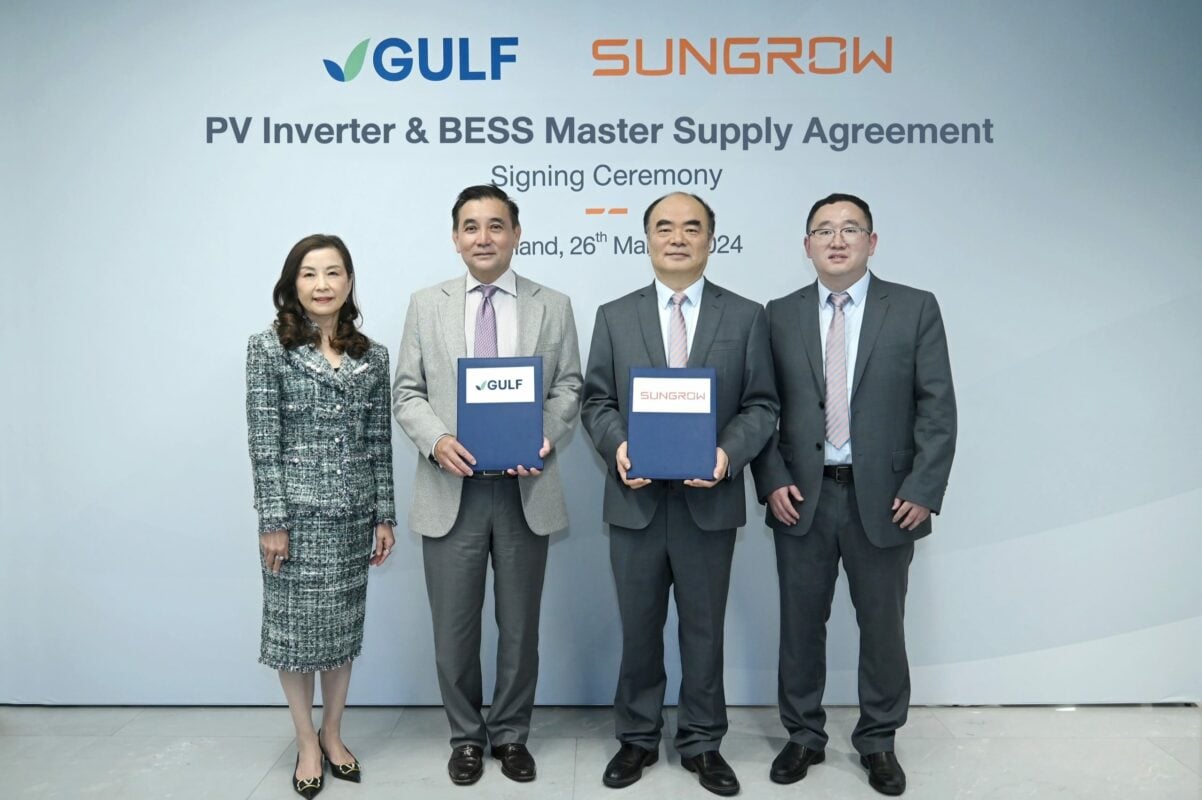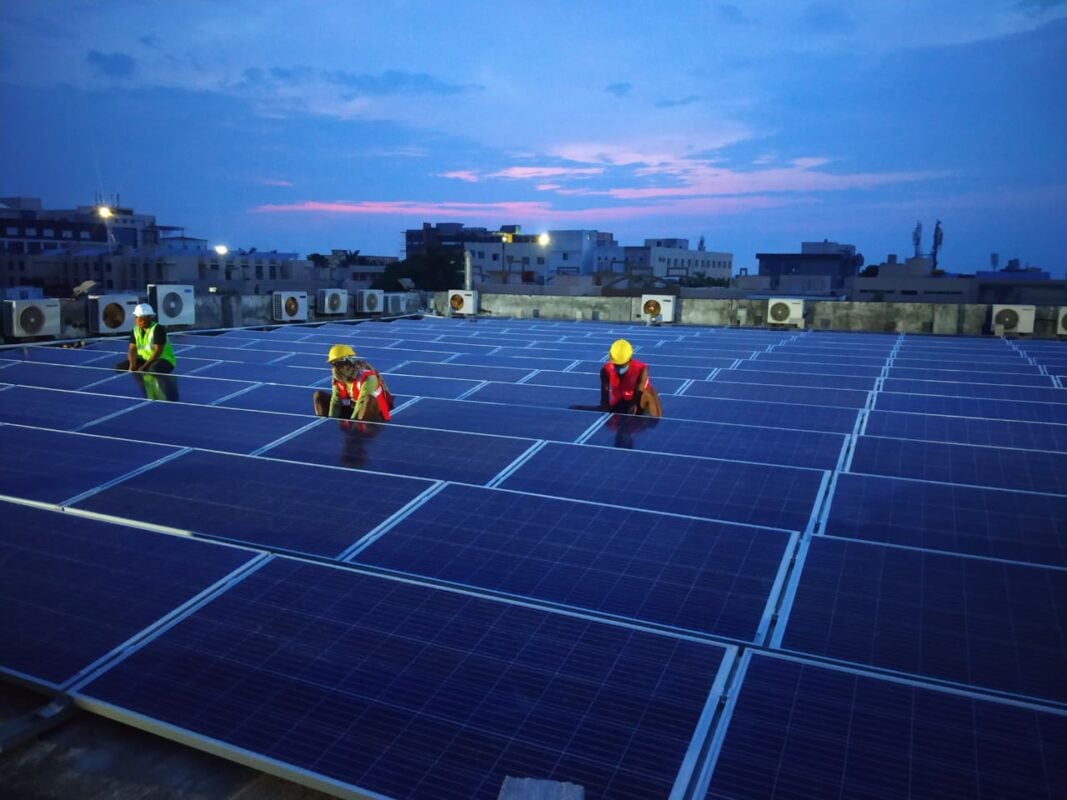Research institute Fraunhofer ISE said last year that battery recycling capacity in Europe (including UK) by end-2023 would hit 160,000 tonnes, and reach 400,000 tonnes in 2025. It estimates that by 2035, there will be nearly 1,200,000 tonnes of battery or battery material needing an end-of-life solution on the continent.
Companies building the largest of these facilities include Ecobat, Altilium, Northvolt, Librec and EcoNili.
Most of this is for black mass production – collecting, testing and then shredding battery material – but just under half of recycling facilities will have the capability to then refine black mass and recover the critical materials, like lithium, cobalt and nickel, Fraunhofer ISE said.
If they were all whole lithium-ion batteries, 400,000 tonnes of battery material would cover around 1-3GWh based on the current average weight of a battery, though the majority of the volumes recycled will be battery scrap from battery manufacturing (around 65% according to Ecobat’s Tom Schaefer). As much as 10-30% of the raw material inputs into lithium-ion battery production come out as scrap.
End-of-life requirement for EV and ESS driving investment in recycling
The primary driver of these investments in recycling is EU rules requiring those selling batteries to have an end-of-life solution in place from the very beginning. This applies to all segments, including electric vehicles (EVs), energy storage systems (ESS) and consumer electronics.
This is why Northvolt, Europe’s biggest home-grown gigafactory company by planned capacity, has recycling capabilities at its flagship Ett plant in Northern Sweden as well as through a JV entity, Hydrovolt, in Norway.
The end of February also saw another Nordic battery gigafactory firm Morrow Batteries sign an agreement with recycling company Stena, under which Stena will process battery scrap from Morrow’s first gigafactory. Morrow is one of the few primarily targeting the ESS market, and we interviewed both companies at Giga Europe.
Stena’s Per Hellberg told Energy-Storage.news that companies in the ESS space are signing deals that cover the entirety of a project’s lifetime, with agreements to recycle some smaller volumes periodically as the project degrades before the entire system needs to be replaced at the end of its life.
Full replacement or recycling of a projects’ BESS capacity is being seen at select sites recently, including a 4.6MWh project in Hawaii and a 44MWh project in Illinois, US last year, and more will be coming as projects age.
Onshoring supply chain
Other delegates Energy-Storage.news spoke to agreed that recycling is also seen as a core part of increasing the amount of locally available critical materials the continent’s gigafactory projects will need to reduce dependency on China. Mining is obviously the primary route to this, but the sector faces huge challenges in having public acceptance for projects.
The focus on recycling may come at the expense of second life energy storage, which involves redeploying use EV batteries into stationary ESS. Stena sold its second life energy storage arm BatteryLoop in September, to a new, EU-backed company Repono. (Energy-Storage.news will write a separate article on the second life sector more broadly in the coming weeks.)
NMC (nickel-manganese-cobalt) chemistry is currently the main focus for recycling projects in Europe that have a refining capability, because of the much higher value of the metals that come out of it.
“There is very little LFP (lithium iron phosphate) refining capability being built in Europe,” Hellberg said. That also reflects NMC being the focus of most gigafactory production, mostly because of focus on EVs which much more commonly use that chemistry over LFP. Within recycling broadly, there is more focus on setting up black mass recycling than refining because of its comparatively lower capex requirements.
Both Stena and Ecobat take all types of batteries for their black mass produced, but material from LFP cells would then need to be shipped out of Europe for further processing and refinement for the foreseeable future (to a greater extent than for NMC).
Energy-Storage.news was told that China is the only country putting substantial investment into end-to-end LFP recycling capabilities because it sees controlling lithium as key to continuing to dominate the global battery market.
VIDEO: What it takes to scale grid battery storage manufacturing, from idea to gigafactory
But how do you turn new battery ideas into tomorrow’s gigafactory? The evolution of an idea in the lab to a viable product to high-volume manufacturing can be challenging and take years.
Whether you are a start-up or an established company, bringing a new BESS to market and scaling production is a journey, and companies need to achieve key milestones along the way.
ATS Industrial Automation has delivered over 110 EV battery assembly and test lines and is leveraging this experience to help companies design and scale grid battery manufacturing.
In this Webinar, we explore the lifecycle of a BESS company from ideation to gigafactory. We will examine the seven stages, from idea and design viability to creating samples, developing a pilot line, demonstrating manufacturability, and full production.
We discuss the challenges at each stage, equipment investments, product stability requirements, and investor and customer expectations. Hear how companies have navigated each stage and successfully transitioned to gigafactory.
Topics included in this Webinar include:
When to engage with consulting and automated solution partners.
The importance of battery testing and validation in hitting key milestones.
Why design for manufacturing should be considered early in the lifecycle of a company.
Transitioning from a manual manufacturing process to a highly automated process.
How to leverage data and digitization in scaling manufacturing.
Speaker:
Robert Faulhammer, VP of sales, specialty automation, ATS Automation
[embedded content]
You can also register to watch the webinar from the on-demand section of the site, which will also enable you to access presentation slide deck, as well as all other Energy-Storage.news webinars.
Prevalon secures first BESS order since Mitsubishi Power Americas spin-out
Prevalon said the project provide grid resiliency as a net peak solution and help the utility to provide reliable power during peak demand period, though it didn’t reveal the location. Idaho Power is active in the states of Idaho and Oregon.
It is the second major announced grid-scale BESS project from Idaho Power, which is also a transmission system operator (TSO) and operator of gas plants and hydropower and is aiming for 100% clean energy by 2045. Last year saw construction start on 524MWh of projects using BESS equipment from system integrator Powin.
Prevalon’s BESS offering – the Prevalon Battery Energy Storage Platform – is, the company says, a complete AC solution including the battery enclosures, inverters, medium voltage transformers and EMS (energy management system).
Thomas Cornell, CEO of Prevalon having led Mitsubishi Power Americas BESS activities since 2017, commented: “We place high value on the partnering mindset and are looking forward to working closely with Idaho Power as they incorporate our end-end integrated battery energy storage solution into their long-range plans to ensure a stable and reliable energy grid for their customers.”
The future of home energy: Huawei’s flagship residential energy storage product
Conquering challenges with the next-gen product
In response to pressing challenges faced by the industry and consumers alike, innovative technologies are needed. One crucial challenge is the urgent demand for a ‘green revolution’.
Homeowners now recognise the importance of using renewable energy and want to contribute positively to the environment. Soaring electricity prices and frequent power outages are also pushing people for renewable energy solutions. The market needs to adapt to these dynamics.
In this case, residential energy storage systems (ESS) have emerged as game-changers, empowering homeowners to fully utilise solar energy and reduce their carbon footprint.
Traditional green power products face concerns such as rooftop fires, energy storage security, complex installations, and limited product lifespan.
Huawei’s latest offering, the Huawei LUNA S1, tackles these issues head-on by providing security, simplicity, excellent user experiences, and sustainability.
Industry-leading service life and usable energy capacity
Huawei’s flagship Residential Solar ESS product incorporates innovative technologies to optimise energy usage and achieve energy savings with its up to 15-year limited warranty[1], which is at the forefront of the industry.
This means a higher ROI for householders – it will be more years of pure savings once the amount saved on power bills equals the cost of their solar system.
Additionally, the system utilises custom-designed 280Ah battery cells, surpassing the industry-standard 120Ah cells. As stated by Huawei, this results in the excellent usable energy capacity (4.2MWh), which is over 40% higher compared to other vendors Huawei has achieved these breakthroughs through its innovative module architecture and patented temperature control systems.
The flagship product introduces the groundbreaking Module+ technology, featuring an integrated energy optimiser.
This enhances the overall performance of the system, maximising energy efficiency. Furthermore, Huawei’s patented cold and hot compartment structure overcomes heat-related problems posed by high-flow battery cells.
The smart string energy storage system range (pictured) offers flexibility, user-friendliness and great design coupled with ease of installation and 5-layer protection. Image: Huawei.
5-layer protection to ensure safety and reliability
Safety and reliability are paramount in residential energy storage systems, and Huawei’s solution offers comprehensive protection. The system is designed to withstand extreme conditions, from –20°C to +55°C, including submersion in water, heavy snowfall, and extremely low temperatures.
It incorporates a five-layer safety protection mechanism, which includes cell-level protection, electrical protection, structural protection, active protection, and emergency protection.
These features ensure the system’s robustness and minimise risks:
Cell-level protection: The cell has been subjected to rigorous tests, such as cycle tests (up to 1/8 of cycle life) and puncture tests
Electrical protection: It excels in multiple protection measures, such as overcharge, overvoltage, overcurrent, overtemperature and external short circuit protection
Structural protection: Industry’s 1st IP66+ protection, industry’s 1st 40 cm water immersion protection for 72 hours[2]; High-strength chassis, heavy pressure resistance that up to 5 tons, 20% hydrogen explosion test
Active protection: Huawei LUNA S1 provides real-time cell-level temperature and voltage detection, intelligent ports detection, state of health (SoH) calibration for full-lifecycle health protection
Emergency protection: It contains the industry’s only emergency fire suppression module, with world-leading active pressure release technology. Once the temperature reaches 190±15°C, the product will emit gas to effectively suppress the fire chemically.
Easy and intelligent user experience
The user experience is one of the key aspects of Huawei’s Residential ESS. The installation process is simplified, saving more than 50% of installation time compared to traditional systems. There are no communications cable or power cable required between modules. The system also generates lower noise levels, providing a more pleasant environment for homeowners.
The modular design of the system enables homeowners to start with a 6.9kWh unit and easily expand the capacity by adding additional modules. Expansion is simplified, as there is no need for pre-charging or SOC calibration. The new battery pack automatically synchronises its state of charge (SoC) with the existing setup after just one charge/discharge cycle, providing a smooth and efficient capacity expansion process.
This smart string ESS can integrate seamlessly into any modern smart home, offering a seamless setup experience through a single app. The app offers remote monitoring and control capabilities, allowing users to manage their energy storage system from anywhere. making it convenient and hassle-free for users.
Ultimate product design aesthetics
Huawei LUNA1 offers 72-hour protection against water immersion. Image: Huawei
Huawei LUNA S1 is a beautiful piece of equipment that has been designed to look like a work of art in every home. Its design takes a minimalist approach, which is easy to integrate into any home interior style.
It also features a concentric design that is simplistic and borderless. It seamlessly blends with the surroundings, enhancing the overall visual appeal.
The system incorporates a smart capsule-shaped atmosphere light, which looks like a “breathing star”, adding a touch of warmth and elegance to the design. Additionally, the functional and decorative side grille further enhances the aesthetics while serving practical purposes.
A home that always shines: Advancing the zero-carbon journey
Huawei’s zero-carbon household concept is realised through its end-to-end customised PV solution. Huawei LUNA S1 joins Huawei’s advanced FusionSolar Residential Smart PV Solution currently serving over 3.3 million households worldwide[3].
To visualise the tangible benefits of this green vision, consider the environmental impact of one 30 kW green power system: its annual power generation is approximately 36,000 kWh, which is equivalent to planting 930 trees annually (about 2 per day) and reducing carbon dioxide emissions by about 17 tons each year.
With Huawei’s advanced FusionSolar Residential Smart PV Solution, the system can meet up to 90% of a household’s energy needs, with the potential to achieve 100% in the future. This paves the way for a zero-carbon household, reducing dependence on traditional energy sources and contributing to a greener planet.
[1] Warranty conditions may vary by region and temperature. Please refer to the warranty letter for details.
[2] Huawei LUNA S1 is not designed for prolonged underwater use. It cannot be submerged over the depth limit or used for a maximum of 72 hours underwater. Please keep the product away from water sources during daily use.
[3] Data as of the end of 2023.
Friday Briefing: Led by BTM, Europe overtakes the US in 2023 deployments
That appears to have changed, with 10GW of storage deployed in European countries during 2023, according to the eighth edition of the European Market Monitor on Energy Storage (EMMES), published on Thursday (28 March) by the trade association EASE and analysis and research group LCP Delta.
Recent figures from Wood Mackenzie found the numbers for the US to be around 8.7GW.
As we had already heard at the Energy Storage Summit EU 2024 in February, the picture for energy storage in Europe is changing. While EASE – the European Association for Storage of Energy, to give the full monicker – has highlighted in its modelling that something like 14GW each year will be needed for in the European Union (EU) countries alone to meet climate targets, it’s an exciting change of pace.
What’s perhaps most interesting however, is that US deployments are heavily dominated by front-of-the-meter (FTM), grid-scale battery energy storage systems (BESS), while the opposite is true in Europe, according to the EMMES researchers.
For example, for Q4 2023, Wood Mackenzie said that of 4,235MW of new energy storage that came online during the quarter, 3,983MW was utility-scale FTM BESS, and that was by no means an unusual finding throughout the years that the firm’s US Energy Storage Monitor – formerly GTM Research’s Energy Storage Monitor before a 2017 buyout by Wood Mackenzie – has been tracking the market.
EMMES, on the other hand, highlighted that of approximately 10.1GW that came online in 2023, only around 2.8GW was in the FTM market segment, and the remaining 7.3GW was behind-the-meter (BTM) storage capacity, largely residential.
Soaring electricity prices in the wake of the gas crisis that followed Russia’s invasion of Ukraine, a desire for greater independence from utility suppliers, and of course, citizens’ commitment to lowering their carbon footprint are all likely drivers for this market momentum.
While that’s incredible to see, it does however point to a need for rapid scaling up of utility-scale deployments. The good news is that there are indications Europe’s policymakers and regulators have begun to recognise this, and from our recent conversations with a number of sources, there is industry appetite too, both from within Europe and from overseas companies looking to get involved in the action.
More about EMMES next week when we return to the office.
Availability knocks, gigafactories rock
This week, we hosted two live webinars: one on the topic of scaling battery storage gigafactories from ideas to mass production with ATS Automation and the other with TWAICE on the important role of battery analytics in ensuring BESS availability and performance.
Many thanks to all who attended, and especially those that asked great questions that kept our speakers on their toes, kept me as a moderator extremely busy, and helped illuminate both subjects for their fellow audience members.
Both webinars were extremely interesting and as usual, you’ll be able to watch them again, or for the first time, via the on-demand section of the site, where by registering you can also receive presentation slides and contact the speakers.
For now, we’ll leave you with the video of our session with Rob Faulhammer of ATS Automation, with the video of the webinar with Lennart Hinrichs and Ryan Franks of TWAICE to follow in the coming days.
[embedded content]
Happy Friday!
This week on ESN Premium
Texas BESS reliability issue is ‘not over’ for ERCOT despite NPRR 1186 state-of-charge rule rebuff
The issue of ensuring reliability of BESS resources in the Texas electricity market has not gone away for grid operator ERCOT, despite the state regulator’s recent quashing of proposed minimum state-of-charge (SOC) rules.
As reported by Energy-Storage.news in January this year, the Public Utility Commission of Texas (PUCT) ordered ERCOT to rescind NPRR (Nodal Protocol Revision Request) 1186, a rule which forced battery energy storage system (BESS) resources to hold additional capacity when providing ancillary services.
ERCOT’s reasoning was to ensure that BESS resources could fulfil their ancillary service duties, with some units occasionally failing to provide the power they were contracted to provide.
Speaking to Energy-Storage.news at our publisher Solar Media’s Energy Storage Summit USA 2024 in the capital Austin last week, optimiser Gridmatic’s VP business development David Miller explained that the issue is not over.
Undeniable ‘momentum behind energy storage’ in Europe
The “momentum behind energy storage,” leading to its wider adoption across the grid in Europe is becoming increasingly undeniable, Energy-Storage.news Premium has heard.
Speaking with the site at last month’s Energy Storage Summit EU, Florian Mayr, a strategy, business development, and transactions expert at advisory group Apricum, said that there has been a fundamental change in the way the technology is viewed by policymakers and regulators, particularly at the European Union (EU) level.
There is growing recognition in the European Union that “energy storage has to be part of the equation” in providing flexibility to an electricity system increasingly reliant on low-carbon energy sources, Mayr said.
“I think what we’re seeing in many markets [in Europe], including also notorious laggards like Germany, suddenly there’s movement. Energy storage is seen as an asset, not as a burden, and part of the solution to the problem.”
BESS price falls pushing marginal projects into IRR investors need, US developer says
BESS price falls have pushed many marginal projects in merchant markets into a rate of return needed for investment, US developer Available Power told Energy-Storage.news amidst the sale process for its own 100MW/200MWh ERCOT project.
The falling prices of BESS over the course of the last 6-12 months has been well-documented by Energy-Storage.news recently, and Available Power’s president Ben Gregory said this has significantly boosted the market for projects in merchant markets (like Texas, where ERCOT is the grid operator).
“A lot of M&A slowed down and then picked up once lithium and BESS prices came down, because a lot of projects that were on the margins for IRR (internal rate of return) became more attractive,” Gregory said, speaking in an interview at Solar Media’s Energy Storage Summit USA 2024 in Austin, Texas’ state capital, last week.
BESS price falls pushing marginal projects into IRR investors need, US developer says
“A lot of M&A slowed down and then picked up once lithium and BESS prices came down, because a lot of projects that were on the margins for IRR (internal rate of return) became more attractive,” Gregory said, speaking in an interview at Solar Media’s Energy Storage Summit USA 2024 in Austin, Texas’ state capital, last week.
“A project that was at 12% IRR last year, is now at 14-15% IRR because of the BESS price falls, and has now been pushed to the rate investors need for merchant assets. So you will see a lot more activity. The price decreases have had a tremendous impact on what we’re doing.”
The president of system integrator Powin alluded to this type of IRR-dependent project in comments to Energy-Storage.news included in a previous article.
Company’s 200MWh project hits NTP and enters sales process
M&A activity has subsequently picked up, especially in the 9.9MW/20MWh asset class – a size of project in ERCOT which benefits from a much quicker interconnection process due to being below a 10MW threshold – Gregory said, saying the firm recently sold three assets this size. Part of this is also down to an increased level of education from investors about energy storage, he added.
Alongside its portfolio of 9.9MW/20MWh projects, Available Power has developed a much larger 100MW/200MWh project near Austin, at a new airline and technology centre development called Greenport.
Gregory said the Greenport BESS project has reached notice to proceed (NTP) and is currently being sold by the company, though its commercial operation date (COD) had to be pushed back substantially from the mid-2024 initial target.
“Greenport is at NTP, and we’re currently selling the project. We are running an auction process, in coordination with (project M&A marketplace) LevelTen Energy, and have substantial interest in part because of the tolling agreement options that have recently emerged in the market,” Gregory said.
“What made it tough to sell last year was the uncertainty and long-lead times on the equipment supply, especially on circuit breakers, so we secured our own supply of equipment to achieve a commercial operation date (COD) of February 2026. That was a painful exercise, but was necessary in order to meet investors’ requirements.”
‘Manufacturing’ approach to development in face of falling prices
Energy-Storage.news then asked Gregory how the firm was dealing with reportedly falling prices for NTP projects in the US market. Speaking with Energy-Storage.news in November, and specifically mentioning 5-20MW projects and the Texas market, developer-operator Agilitas Energy’s CEO Barrett Bilotta said prices being asked for some portfolios of NTP projects had plummeted by 70% year-on-year.
In response to the question of project pricing, Gregory said that Available Power is taking a “manufacturing-like, standardised approach to development”.
Gregory: “We know what buyers want versus trying to accommodate or anticipate everyone’s hypothetical requirements. By dialling in on a specific set of requirements, we might leave some money on the table but we can do much more volume.”
Speaking at last year’s Summit event in Austin, Available Power’s VP business development Alex Krass explained how Available Power has an engineering, procurement and construction (EPC) partnership with substation specialist Linxon to build projects once they transact.
Discussing the BESS pricing fall, Gregory added that supply from China was “attractive” but that products from other countries are nearing parity. Consultancy Clean Energy Associates (CEA) forecasted in October 2023 that the Inflation Reduction Act’s incentives would make US-manufactured BESS cost-competitive with China’s by 2025.
German mayor allocates land for 280MWh BESS after nuclear waste storage plan rejected
The site, in the state of North Rhine-Westphalia (NRW), houses the former Würgassen nuclear power plant which was decommissioned in 1994 but still stands today. The site will allow the BESS to utilise existing grid infrastructure including a transformer and power lines.
Though not stated, that infrastructure should also include a grid interconnection point, which can often take years or even decades to obtain for greenfield projects.
Westphalia Weser will invest €92 million (US$100 million) in the project, which should come online in H2 2026. Mayor Grimm explained that the decision comes after the state rejected alternative plans for the site.
“At the end of 2023, the Federal Environment Ministry fortunately rejected plans for a central storage facility for low- and medium-level radioactive nuclear waste in Würgassen. With a future-oriented project that supports the energy transition comes into focus, we live up to our role as one of the four energy locations named in the NRW regional plan,” he said.
The project will increase the stability of the grid’s energy supply, the Westphalia Weser’s announcement said.
It was described as a pilot project but at 120MW/280MWh it would be one of the largest BESS projects in Germany. Systems of 235MWh and 200MWh are currently being built by utility and generator RWE and developer BW Storage respectively, while another developer Kyon Energy said construction on a 275MWh one will start in 2024.
Several 300MW/600MWh projects are being planned by developer and system integrator Kyon Energy, which was acquired by investors Brookfield and NIC at the start of the year.
Germany had around 1GW/1GWh of front-of-meter grid-scale energy storage online as of end-2023 and, according to a recent report from consultancy GEEC, that could increase to 50GW by 2037. The market picked up in 2022 and 2023 after several years of stagnant grid-scale deployments.
A major development this year saw the government release an Electricity Storage Strategy, which ‘put storage on the political agenda for the first time’ according to Lars Stephan, senior manager of policy and market development for BESS integrator Fluence on LinkedIn.
Ukraine’s DTEK buys capacity market-winning 532MWh BESS project in Poland
Columbus will continue to oversee the development process until the project reaches ready-to-build (RTB) status, which is expected this year and will result in an additional bonus payment from DTEK, which has both power generation and retail utility businesses.
The 133MW power, 532MWh project won a capacity market contract in December 2022 for 125MW of its power, with an obligation to deliver from 2027. That year saw four BESS projects awarded contracts totalling 165MW, with the other three owned by developers Hynfra, OX2 and Energa Wytwarzanie (part of PKN Orlen group). Energy-storage.news interviewed Hynfra and OX2 for Premium articles last year.
The 2023 capacity market auction, for delivery in 2028, saw the amount of BESS awarded capacity jump ten-fold to around 1.7GW, with Portugal-based developer and IPP Greenvolt win 70% of this before it was acquired by private equity firm KKR, in December.
The 2022 auction saw a higher clearing price, however, of PLN 406.35/kW (US$101) versus PLN 244.9/kW (US$61) in 2023.
Around the time of the 2023 auction, research firm LCP Delta wrote that Poland would lead BESS deployments in the Central and Eastern Europe (CEE) region with around 9GW of projects awarded grid connections.
Energy-Storage.news’ publisher Solar Media will host the 2nd Energy Storage Summit Central Eastern Europe on 24-25 September this year in Warsaw, Poland. This event will bring together the region’s leading investors, policymakers, developers, utilities, energy buyers and service providers all in one place, as the region readies itself for storage to take off. Visit the official site for more info.
Sungrow, JinkoSolar in 3.5GWp PV, BESS supply deals with major Thai energy company GULF
The ratio of inverters to BESS was not specified in a press release, however Sungrow did say that it will provide its utility-scale SG350HX string inverters and PowerTitan range of battery storage equipment to its customer. Sungrow recently launched PowerTitan 2.0, which enables up to 5MWh storage capacity using lithium iron phosphate (LFP) batteries with 2.5MW power conversion system (PCS) integrated in a standard 20-ft container configuration.
Gulf Energy Development (GULF) said that equipment purchased through the Master Supply Agreement (MSA) will be deployed at a combination of ground-mount solar PV plant, solar-plus-storage hybrids and rooftop PV projects in Thailand.
The projects are expected to enter commercial operation between this year and 2030 and will be deployed by numerous GULF subsidiaries.
The deal follows an MSA Gulf Energy announced earlier this month (22 March) with another major Chinese solar PV company, JinkoSolar, for the supply of PV modules with a total installed capacity of 3,500MWp, also to be deployed GULF group company solar farms, co-located battery and solar plants and rooftop PV.
Gulf Energy Development is one of Thailand’s biggest independent power producers (IPPs), with a portfolio mainly comprising gas-fired generation and renewable energy. The company’s 2023 revenues totalled THB116 billion (US$3.2 billion), with THB15.6 billion profit.
While it has operations and assets in the Middle East and other countries in Southeast Asia such as Vietnam, in Thailand, Gulf Energy is among IPPs that sell power to Electricity Generating Authority of Thailand (EGAT), the country’s monopoly energy supplier.
Sungrow noted that under the national Power Development Plan (PDP), Thai renewable generation resources will be allowed to participate in electricity market-based opportunities to maximise their revenues.
Sungrow claimed the PDP’s provisions will enable Thailand to create a model of renewable energy development for Southeast Asia.
Currently, Thailand’s total generation capacity of about 53GW is made up of a mix of EGAT’s own generation fleet, power it procures from major IPPs like Gulf, distributed power producers and energy imports from neighbouring countries.
At present, the vast majority of generation comes from gas (around 60%) and domestic coal-fired power plants (about 15%), while renewable energy – including solar PV, wind, biomass and waste-to-energy – accounts for about 23%, according to figures from the US International Trade Admiinistration (ITA).
So far, battery storage development in Thailand has been limited, although in 2022, 994MW of solar-plus-storage projects were awarded power purchase agreements (PPAs) with EGAT through a government-run tender process.
Under its Nationally Determined Contributions to meeting goals of the multilateral Paris Climate Agreement, Thailand is targeting carbon neutrality by 2050 and net zero greenhouse gas (GHG) emissions by 2065. Meanwhile the Thailand National Energy Plan (NEP) 2023 is expected to be finalised this quarter and includes the PDP as well as plans for energy efficiency, renewables development and gas and fuel development.
Energy-Storage.news’ publisher Solar Media will host the 2nd Energy Storage Summit Asia, 9-10 July 2024 in Singapore. The event will help give clarity on this nascent, yet quickly growing market, bringing together a community of credible independent generators, policymakers, banks, funds, off-takers and technology providers. For more information, go to the website.
State power company seeks 2,500MWh BESS, pumped hydro consultant in Odisha, India
GRIDCO will carry out a tender-based competitive bidding (TBCB) process, to be followed by an online reverse auction in May, then entering into energy storage purchase agreement (ESPA) contracts with successful developers.
Battery energy storage system (BESS) resources must come online by the beginning of April 2026 and will be required to provide their capacity until the end of March 2031. Extensions to those contracts are possible, GRIDCO said.
Bids must be for projects with minimum 50MW output and 250MWh capacity, and no larger than 250MW/1,250MWh per project. Projects already in construction or awaiting commissioning will also be eligible in addition to new-builds, provided they can meet the 5-hour duration requirement.
The state government of Odisha, on India’s eastern coast on the Bay of Bengal owns the power company. It is responsible for the bulk purchase and transmission of power to Odisha’s four power distribution companies (DISCOMs). It utilises the state transmission system operator (TSO) Odisha Power Transmission Corporation’s grid network.
Aligned with India’s national renewable energy target of 500MW of non-fossil fuel resources on the grid by 2030 – equivalent to around 43% of the electricity mix – GRIDCO is incorporating more and more variable renewable energy (VRE) resources into its own portfolio.
Integrating that renewable energy capacity will require flexibility resources and BESS is – along with pumped hydro energy storage – considered the most cost-effective and technically capable resource for doing that.
The Ministry of Power of India has also mandated an Energy Storage Obligation for GRIDCO and other bulk power entities’ portfolios to comprise 4% energy storage by 2029-2030.
Odisha seeks BESS and pumped hydro in complementary roles
A few days prior to the BESS tender’s launch (11 March), GRIDCO opened a solicitation seeking consultants to assist the state in developing pumped hydro energy storage (PHES) resources for the state.
These resources would be on a much larger scale, potentially in the gigawatt-hour range, and would offer longer duration energy storage capabilities than the battery storage systems it is tendering for. A pre-bid meeting was held 18 March and the date for last submissions of bids is next week on 3 April.
Published last September, India’s National Electricity Plan, based on modelling by the Central Electricity Authority (CEA), estimated a need for about 19GW/128GWh of pumped hydro and 42GW/208GWh of BESS to make up a total 61GW/336GWh of energy storage deployments by 2029-2030.
Tenders will be an important way to enable that capacity to be procured and deployed, as highlighted by recent analysis from the Institute for Energy Economics and Financial Analysis (IEEFA) and JMK Research. A report produced by the pair described energy storage as the likely “main disrupter” of India’s power sector during this decade.
It noted that by November of last year, more than 8GW of tenders had already been issued by national and state government authorities, 56% of which were for PHES capacity.
Meanwhile, a 4GWh tender process supported by the Union Government through viability gap funding (VGF), seeking to bridge the gap between available merchant revenues and the need for storage, got underway recently with the Solar Energy Corporation of India (SECI) launching its first tranche of solicitations.


